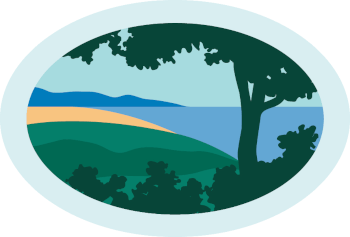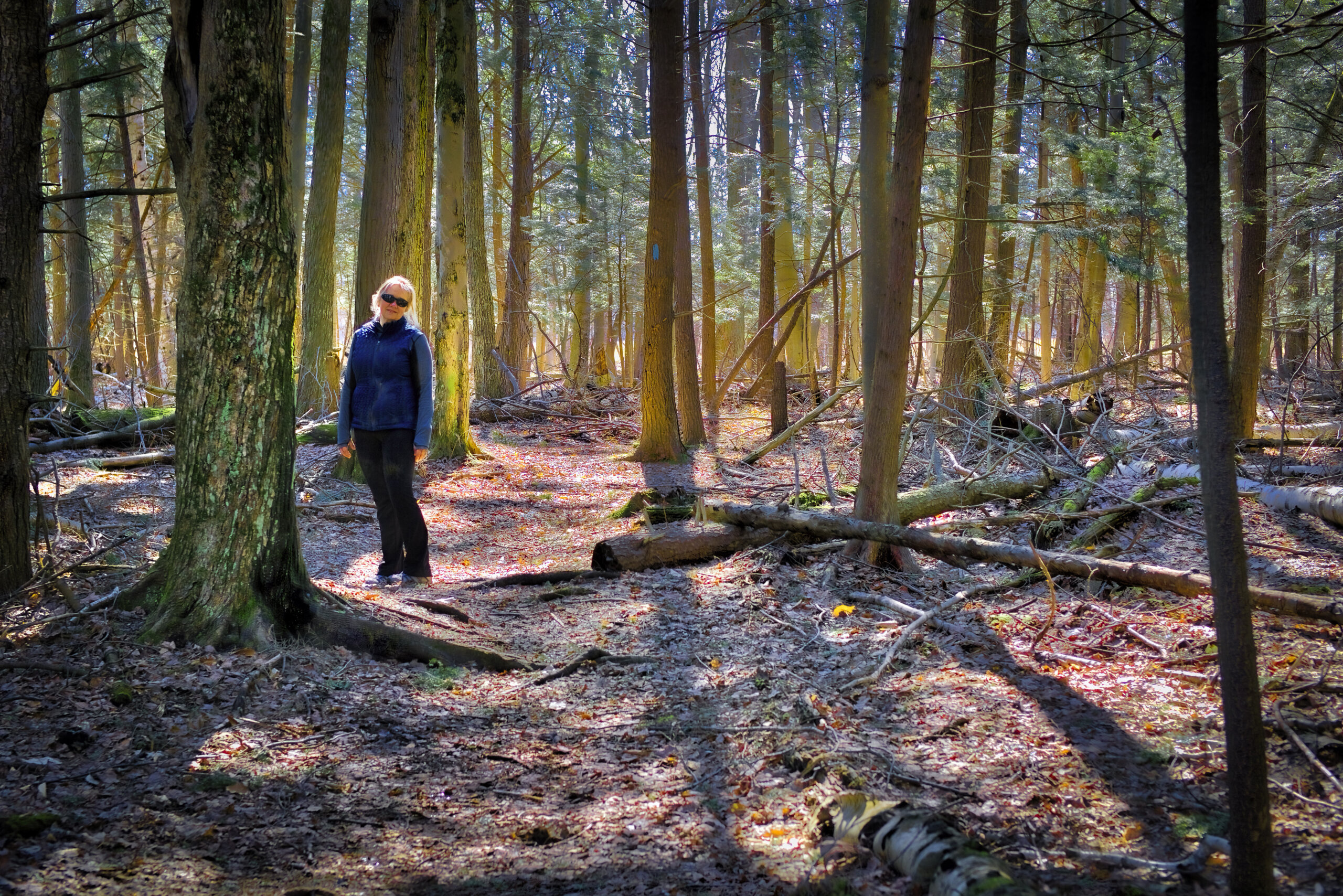In Leelanau, our forests are more than beautiful places to recreate. Trees provide habitat, clean air and water, and help combat the effects of climate change. As we celebrate Earth Week, we’re highlighting the thoughtful, science based care our Stewardship Crew put into our forests year-round. From reintroducing resilient tree species to using new technology to detect threats, this work helps protect Leelanau’s woodlands now, and well into the future.
Bringing Back the Mighty Elm
The American elm was nearly wiped out by Dutch Elm Disease (DED) starting in the 1950s. But thanks to a national breeding program, hope is on the horizon. This spring, we’re planting 250 disease resistant American elms at Palmer Woods, Clay Cliffs, and DeYoung Natural Areas. These special trees were developed from cuttings of elms that have survived the disease.
We’re also planting a diverse mix of native trees and shrubs, including white oak, serviceberry, silky dogwood, and hazelnut. These plantings don’t just provide beauty, they provide biodiversity, wildlife habitat, and healthy ecosystems. As part of this effort, we’re partnering with the U.S. Forest Service to study how a substance called biochar (a kind of natural charcoal) can help young trees thrive in northern Michigan’s unique soils. It’s a long term investment in Leelanau’s forests.
Protecting Hemlocks with eDNA
Hemlocks are some of our region’s most ecologically and culturally significant trees, and they’re under threat from a tiny but invasive insect: the hemlock woolly adelgid (HWA). To detect this invasive pest early, we’re working with Grand Valley State University to use cutting-edge environmental DNA (eDNA) monitoring devices across eight of our natural areas.
Starting in mid-May, these devices will collect genetic material from the air, allowing researchers to detect the presence of HWA before it becomes a problem. We’ll focus this monitoring in 472 acres of priority hemlock stands in places like Kehl Lake, Houdek Dunes, and Lighthouse West, to help protect these beloved forest giants before it’s too late.
Staying Ahead of Oak Wilt
Oak trees are the backbone of our forests, and oak wilt is one of their greatest threats. This fast spreading fungal disease travels through root systems and can ruin whole stands if not caught early. That’s why our Stew Crew closely monitors oaks each summer, looking for early signs of infection.
We’re also exploring high tech tools like multi-spectral imagery, which can detect subtle changes in tree health that aren’t visible to the naked eye. And we have a simple request for you: please don’t prune your oak trees between April and November! Pruning can attract sap beetles that spread the disease from tree to tree.
At the Conservancy, every tree we plant, study, and protect is part of the larger picture, one where forests continue to shape the land and lives of Leelanau. Thank you for caring about them, and supporting the work that cares for them, too.




